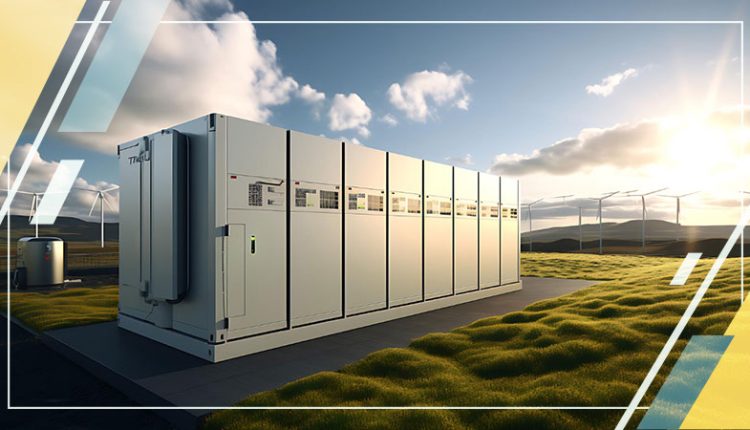Energy storage systems are the backbone of modern energy management, offering a solution to the intermittent nature of renewable energy sources and the increasing demand for reliable power. From grid-scale battery arrays to innovative pumped hydro storage, these systems are revolutionizing the way we capture, store, and distribute energy.Let’s explore more about these systems.
What are Energy Storage Systems?
Energy storage systems (ESS) are technologies and systems designed to store energy for later use. They play a crucial role in modern energy infrastructure by enabling the integration of renewable energy sources like solar and wind into the grid, as well as providing backup power and improving grid stability.
There are various types of energy storage systems, each with its own method of storing energy and unique characteristics. Some common types include:
Batteries: Batteries are perhaps the most well-known type of energy storage system. They store energy in chemical form and can be charged and discharged repeatedly. Lithium-ion batteries, lead-acid batteries, and flow batteries are examples of battery-based energy storage systems.
Pumped Hydro Storage: Pumped hydro storage systems use the potential energy of water by pumping water uphill to a reservoir when there is excess electricity available, which is then released downhill through turbines to generate electricity when demand is high.
Flywheel Energy Storage: Flywheel systems store energy by spinning a rotor at very high speeds. When energy is needed, the rotor’s kinetic energy is converted back into electricity.
Thermal Energy Storage: These systems retain heat or cold to be utilized at a later time. They can utilize materials like molten salt or phase change materials to store thermal energy, which can then be used for heating or cooling purposes.
Compressed Air Energy Storage (CAES): CAES systems store energy by compressing air into underground caverns or storage tanks when energy supply exceeds demand. When electricity is required, the compressed air is released and expanded through turbines to produce power.
Supercapacitors: Supercapacitors store energy electrostatically, offering high power density and fast charging and discharging capabilities. They are often used in applications requiring quick bursts of power, such as regenerative braking in electric vehicles.
Benefits of Energy Storage Systems
The benefits of ESS encompass a wide range of advantages, including but not limited to:
- Guaranteeing the reliability of critical services
- Enhancing facility flexibility
- Improving the resilience of interconnected networks
- Meeting high demand loads efficiently
- Facilitating rapid charging for Electric Vehicles (EVs)
- Providing essential services to remote communities
Reaching the Goal of Net-zero Carbon Emissions with Energy Storage Systems
Various governmental bodies globally are implementing multiple initiatives aimed at encouraging the adoption of energy storage solutions. One such notable effort is the Long Duration Storage Shot (LDSS), a pivotal component of the U.S. Department of Energy’s Energy Earthshots program. The primary objective of LDSEE is to achieve a substantial 90% cost reduction for grid-scale energy storage systems capable of providing 10 or more hours of duration within the span of a decade. The utilization of energy storage technology holds the promise of expediting the complete decarbonization of the electric grid.
Achieving the LDSS target is crucial in achieving the objective of eliminating carbon emissions from the power grid by 2035 and nationwide by 2050. The implementation of energy storage plays a vital role in enhancing the autonomy of the power system at a local level and bolstering the resilience of communities facing recurrent power outages or lacking grid connectivity. The advancement of technology and production capabilities to meet the cost benchmarks of LDSS will pave the way for a burgeoning manufacturing sector in the United States specializing in storage solutions.
As the costs of solar and wind power technologies continue to plummet, the widespread adoption of variable renewable energy sources is expected to become the norm. Simultaneously, the push to decarbonize the transportation sector is gaining momentum with the increasing use of electric vehicles.
As renewable energy sources like solar and wind become more prevalent, ensuring a smooth transition to a future with variable energy supply is key. Electricity storage, through advancements in battery technology and other methods, is crucial for maintaining uninterrupted power. It enables widespread adoption of electric vehicles, ensures round-the-clock power for off-grid solar systems, and enhances the resilience of renewable power grids.
International Predictions
In the report titled “Electricity Storage and Renewables: Costs and Markets to 2030,” the International Renewable Energy Agency (IRENA) examined the present expenses and effectiveness of various electricity storage technologies used in stationary applications. It also outlined the potential for cost reductions and enhanced performance by 2030.
The study indicated that the overall energy storage capacity for electricity has the potential to increase threefold by 2030. This growth, coupled with the fast integration of renewable energy sources, is expected to be adequate to double the proportion of renewables in the worldwide energy composition within approximately fifteen years. Specifically, the capacity for battery electricity storage may experience a significant 17-fold expansion, with the associated technologies’ costs possibly dropping by as much as 66%.
This research demonstrates the significant opportunities presented by battery energy storage systems in terms of deployment and cost-saving potential. Projections suggest a considerable decrease in total installation expenses, ranging from 50% to 60% by the year 2030, with an even more substantial decline in battery cell costs. These advancements are primarily attributed to enhanced manufacturing processes, improved material combinations, and reduced material usage.
End Note
Energy storage systems represent a critical aspect of the transition towards a sustainable and resilient energy landscape. As the demand for renewable energy sources continues to grow, the role of energy storage in balancing supply and demand, ensuring grid stability, and enabling greater flexibility in energy management cannot be overstated. The future of energy storage systems holds great promise for enhancing energy security, reducing carbon emissions, and fostering a more reliable and efficient energy infrastructure.


